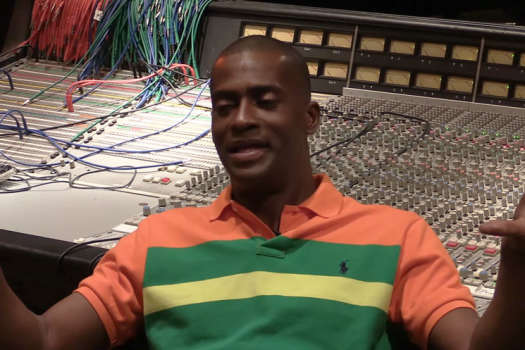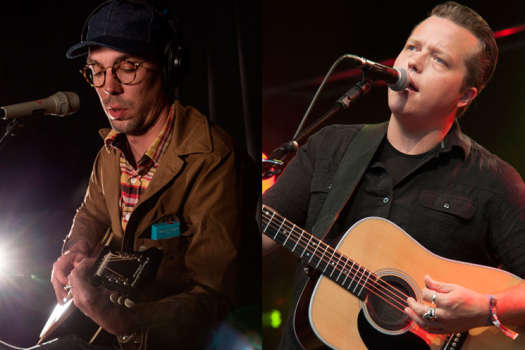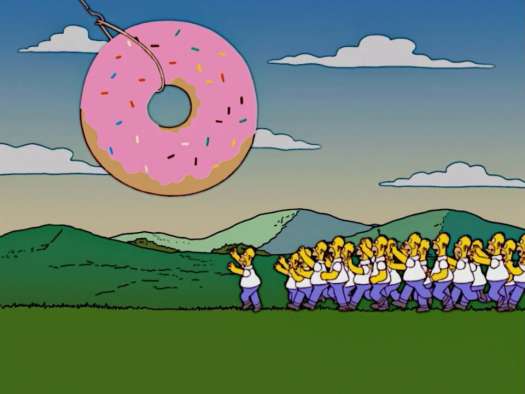The familiar story of a boy and his dog, as interpreted by director Tim Burton, is at the heart of Frankenweenie. Based on his 1984 short film of the same name, the feature-length version revolves around a boy reanimating his recently deceased pet. The film pays homage to the familiar Frankenstein story, written by Mary Shelley, which is appropriate, as although the titular character begins in one piece, the film itself feels, at times, too cobbled together from other stories.
When his beloved dog, Sparky, dies in a car accident, Victor Frankenstein (Charlie Tahan) is broken-hearted and tries to use science to bring him back. Victor's classmates, consumed with competition due to the local science fair, soon learn what he's done and attempt reanimation projects of their own, with disastrous results.
As scripted by frequent Burton collaborator John August (Big Fish, Corpse Bride), the film builds its suspense steadily (if predictably) before hurrying to the end. However, the disregard for any genuine struggle or second act to speak of gives a just-desserts tone to the movie, one that's welcome and befitting the story. It'd be too easy to feel the strain of a movie called Frankenweenie reaching too hard for something more.
As is, the film waxes nostalgic as is it glances back at Burton's entire career. Actors Winona Ryder (Edward Scissorhands, Beetlejuice), Catherine O'Hara (Beetlejuice, The Nightmare Before Christmas), Martin Short (Mars Attacks!) and Martin Landau (Ed Wood) all lend their voices, sometimes to multiple characters. And when one of Victor's classmates lays out a dead bat to reanimate, listen for composer Danny Elfman's score to wink at his work from the original Batman. It's just one of many references to the past to be found.
There are some new moments to be gleaned, however. The small town of New Holland that Victor and his family live in is not unlike ones Burton has depicted before, but unlike the sickening brightness of suburbia in Edward Scissorhands, the black & white palette of Frankenweenie gives a new take on the same setting.
The lawn flamingos that punctuate the neighbour's front yard are less offensive and more their own kind of macabre, with their monochromatic color scheme. And the opening sequence, which subverts the 3D presentation with a lo-fi home movie (along the lines of the French marionette show trick that opened Team America: World Police) suggests a playfulness, albeit one that is frustratingly intermittent elsewhere in the film.
Frankenweenie feels ultimately like a contradiction, a film both old and new, clever but undercooked. Take note of the trailer beforehand for Sam Raimi's upcoming Oz: The Great and Powerful, another 3D film that, in part, will be in black & white. Both films clearly suggest their respective director's love of cinema's rich past, and a perspective that all its tools, be they color or CGI, are ones to be used not because we can, but because they inspire.
In that sense, Frankenweenie may not be a groundbreaking work, but is a fun look back as 3D films begin to come into their own.
(Walt Disney/Buena Vista)When his beloved dog, Sparky, dies in a car accident, Victor Frankenstein (Charlie Tahan) is broken-hearted and tries to use science to bring him back. Victor's classmates, consumed with competition due to the local science fair, soon learn what he's done and attempt reanimation projects of their own, with disastrous results.
As scripted by frequent Burton collaborator John August (Big Fish, Corpse Bride), the film builds its suspense steadily (if predictably) before hurrying to the end. However, the disregard for any genuine struggle or second act to speak of gives a just-desserts tone to the movie, one that's welcome and befitting the story. It'd be too easy to feel the strain of a movie called Frankenweenie reaching too hard for something more.
As is, the film waxes nostalgic as is it glances back at Burton's entire career. Actors Winona Ryder (Edward Scissorhands, Beetlejuice), Catherine O'Hara (Beetlejuice, The Nightmare Before Christmas), Martin Short (Mars Attacks!) and Martin Landau (Ed Wood) all lend their voices, sometimes to multiple characters. And when one of Victor's classmates lays out a dead bat to reanimate, listen for composer Danny Elfman's score to wink at his work from the original Batman. It's just one of many references to the past to be found.
There are some new moments to be gleaned, however. The small town of New Holland that Victor and his family live in is not unlike ones Burton has depicted before, but unlike the sickening brightness of suburbia in Edward Scissorhands, the black & white palette of Frankenweenie gives a new take on the same setting.
The lawn flamingos that punctuate the neighbour's front yard are less offensive and more their own kind of macabre, with their monochromatic color scheme. And the opening sequence, which subverts the 3D presentation with a lo-fi home movie (along the lines of the French marionette show trick that opened Team America: World Police) suggests a playfulness, albeit one that is frustratingly intermittent elsewhere in the film.
Frankenweenie feels ultimately like a contradiction, a film both old and new, clever but undercooked. Take note of the trailer beforehand for Sam Raimi's upcoming Oz: The Great and Powerful, another 3D film that, in part, will be in black & white. Both films clearly suggest their respective director's love of cinema's rich past, and a perspective that all its tools, be they color or CGI, are ones to be used not because we can, but because they inspire.
In that sense, Frankenweenie may not be a groundbreaking work, but is a fun look back as 3D films begin to come into their own.




